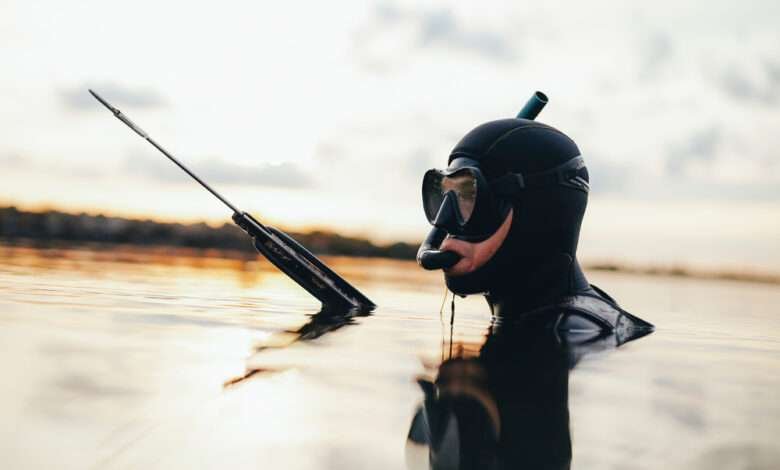5 Basics Of Speargun Maintenance

Every seasoned speargun user knows the importance of speargun maintenance. Not only does it extend its lifespan, but it also minimizes the likelihood of accidents and maximizes its power.
But, of course, regular maintenance requires a certain level of diligence and discipline from its owner. However, even the most diligent speargun owner can and will struggle to maintain their equipment if they know close to nothing about it. If that sounds like you, this article could be of help. Read on as this guide goes over the basics of speargun maintenance.
Read Also: Ed Sheeran details the lovestruck jitters in sweet new single …
- Different Parts Of The Speargun
When inspecting and maintaining a speargun, you shouldn’t only pay attention to the speargun as a whole. Instead, you also must pay heed to all bits and pieces that make up the apparatus. That’s because each equipment part has a different lifespan or durability.
The rubber bands, for instance, have significantly shorter lifespans than other parts. As such, you may need to replace them as often, depending on how often you use them. Some experienced spearfishermen replace their bands 10 to 20 times a year. But for recreational users, you can opt to replace your speargun’s bands at the end of each season. You can explore here if you want to buy power bands.
Furthermore, the maintenance procedure of each part is different from one another. Needless to say, you must have sufficient knowledge of the different parts of the speargun to maintain them properly. With that in mind, here’s a look at what you need to know about each component:
- The handle is what you hold when you have the speargun on hand. It consists of other components like the trigger, the safety, and the mechanism that holds the spear in place.
- The barrel is the long part of the gun. It holds the spear in place while on standby and guides the spear when you pull the trigger, so the spear goes straight.
- The muzzle is at the end of the barrel. Its main function is to anchor the power or rubber bands. Certain speargun models don’t have a muzzle since it’s part of the barrel.
- The power bands are the ones responsible for the shooting mechanism of the speargun. They are stretched back to create tension, and upon the pull of the trigger, the bands are released, and so is the spear. A speargun typically uses one or two power bands.
- The spear is basically the bullet of the speargun. It has a sharp tip, and a few inches from the tip, there’s a piece of metal that points toward the trigger. It essentially serves as a hook that keeps the spear inside the fish as you pull the shooting line in your direction.
- The shooting line is the long-threaded line or material that connects the spear and the speargun. It serves the same purpose as the fishing line in a fishing rod.

- Routine Rinsing
After every use of the speargun, perform routine rinsing, wherein you thoroughly rinse the gun with fresh water and dry it afterward. Note that salt water can accelerate the corrosion process of metal.
- Storage
Like salt water, sunlight has a similar effect on your speargun in terms of accelerating the corrosion of metal. For that reason, after rinsing and you’re about to store it until your next fishing season, it’s best to keep it away from direct sunlight. The same goes for when you’re drying it. It’s best to air dry it rather than use any heat source.
That applies to all the metallic parts of the equipment. As for the non-metallic parts, like the rubber or power bands, you must store them away from light and in a cool, dry location.
- Disassembly And Inspections
To ensure the speargun’s longevity, it’s advisable to regularly disassemble the equipment, even if you haven’t been using it. These include the handle, barrel, power bands, and spear. Doing so can help you assess the condition and integrity of each component and make the inspections go a lot smoother.
Once each part is separate from one another, you must inspect them for abnormalities. This includes ensuring the metallic parts don’t have rust. As for the power bands, make sure there are no cuts, tears, or any signs of damage that may lead to breakage while they’re stretched out.
- Optimizations
At this stage, you must make significant changes, or optimizations, to be more precise, to certain parts of the speargun. Here’s a look at the optimizations you can do for the speargun parts:
- Spear: The only optimization you can do with the spear is sharpen it. For that, you must take the spear out of the gun, get a grinder, and use it to sharpen the spear’s tip. For optimal results, you can use a particularly aggressive flap wheel for your grinder tool.
- Power Bands: As stated earlier, the power bands last much shorter than other parts. You must replace the bands monthly to ensure they don’t break during your hunt.
- Other Parts: Lubricate the mechanical parts that make up the speargun itself.
Summing It Up
It’s not uncommon for a speargun user to not be that knowledgeable about the maintenance procedures. At the very least, you’re willing to learn how to properly maintain your equipment, which is already commendable enough. Nevertheless, your efforts can go a long way in prolonging the lifespan of your equipment and maximizing its efficiency.






